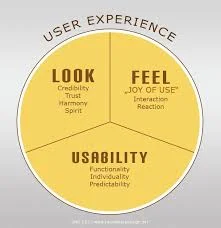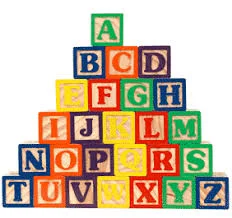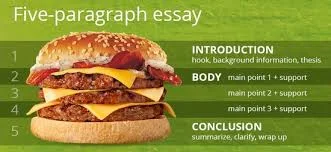To echo Friedrich Nietzche, L'écriture est morte! (Writing remains dead. And we have killed it. How shall we comfort ourselves...? What was holiest and mightiest of all that the world has yet owned has bled to death under our knives: who will wipe this blood off us? What water is there for us to clean ourselves? What festivals of atonement, what sacred games shall we have to invent? Is not the greatness of this deed too great for us? Must we ourselves not become installation artists simply to appear worthy of it?)One of the very top writing challenges my students, and participants in my writing seminars, express to me is their trouble “getting started.” This “how to” post will explain the ins and outs of writing that opening INTRODUCTION. It will cover three main recommendations:
give readers what they need at the start,
avoid starting with “background” info,
use the INTRO to set up the whole document.
In this connection economy (https://www.youtube.com/watch?v=sKXZgTzEyWY), nothing is more important than…connecting. So, when we write, we need our writing, above all, to connect with the reader. Here’s my “how to” for making sure your writing connects with your readers.
The idea that workplace writing needs to be more formal to be "professional" or "impressive" is a 19th-century zombie that just won't die.
Not everyone loves writing or finds it easy. As a student, I struggled with what our teacher called the “first draft.” I also struggled to turn that into a different “final draft.” But what is a first draft when it comes to workplace writing? [HINT: it happens before any drafting is done.]
…I keep getting consulting jobs because my interventions, according to feedback I’m given, do, in fact, improve writing within these organizations. But what really changes within an organization after my writing consulting sessions? Not just individual writing skills. In concert with these individual gains, what changes after my consulting is the whole office writing culture…
Wow…to me it’s quite unbelievable that GRAMMAR has been considered “the skunk in the garden” in the 21st-century writing classroom, and for decades before that. But I want to argue for GRAMMAR. I want to demystify it, show what it really is, and explain how it fits into a skills-based approach to teaching/learning writing…..
Meditation—science tells us—can
reduce stress,
control anxiety,
promote emotional health,
enhance self-awareness,
lengthen attention span,
reduce memory loss,
fight addiction,
improve sleep,
control pain,
decrease blood pressure,
improve listening, and
generate kindness.
All good.
Most of us imagine meditation as a very deep, quiet, private, eyes-closed, rejuvenating experience, maybe enhanced with calming music, candles, aroma therapy, and a special place where we can melt our distress in cosmic quiddity.
Yes, eyes-closed, private meditation can seriously help us to heal.
But then, at some point, we have to open our eyes, reenter the crucible of complex existence and deal with—others.
Wasn’t it Garcin, in Sartre’s play NO EXIT, who exclaims to Inez and Estelle, “HELL—IS OTHER PEOPLE”?
In zen practice, there is sitting Zen (zazen), eyes slightly open, but there is also walking Zen (kinin), eyes more open.
How about an additional EYES-WIDE-OPEN kind of meditation we can do every day, at work?
Our everyday writing at work, which is often considered an irritating part of what we must do every day, can be that kind of satisfying, healing meditation—I prefer the word MINDFULNESS. Here’s how….
Today I’m thinking about the act of organization in writing and how it can function like a recipe from designing through drafting and review/editing.
I have developed and advocate for a radically reader-focused approach to teaching workplace writing (what’s usually called Business/Technical/Professional Writing in colleges), an approach that focuses on very specific skills for
generating useful information for a real reader who needs the information (not a teacher),
organizing the information logically and usually “deductively”—main point first,
using document design to make documents easy for readers to navigate, and
crafting a clear, concise, plain English style through management of paragraphs, sentences, word choices, and mechanics.
I call this approach the HOCs and LOCs approach: HOCs=Higher Order Concerns (CONTENT, ORGANIZATION, DOCUMENT DESIGN); LOCs=Lower Order Concerns (Paragraphs, Sentences, Word Choices, Mechanics). I think of this as a systems approach to thinking about and teaching workplace writing.
The usefulness and readability of any document is generated through these 7 HOCs & LOCs.
In this post, I’m considering the “system” of ORGANIZATION: beyond mere genre requirements (letters, memos, proposals, etc.), what underlying organizational principles should students learn, organizational principles that would apply to any kind of workplace document?
ZERO CONTENT should be the goal of all practical writing.
That concept is most succinctly expressed in the following mathematical statement: zC = RQ - WA, where zC=ZERO CONTENT; RQ = Reader’s Questions; WA = Writer’s Answers.
If you teach (practical) writing at any level (in this swatch I include professional writing of any kind and college writing, as well as its antecedents from first grade onward), I think you should SPOTLIGHT (floodlight) the critically important writing skills for generating useful content for an interested reader.
Useful content should always be the practical writer’s JOB #1. (Only if there’s useful content--for an interested reader--do all the “presentation” skills of writing make sense.)
Let me explain this essential equation for determining when a document has reached ZERO CONTENT….
READING TIME: 4.8 minutes
(Please share this post with anyone you know who teaches writing at any level.)
Talking to the produce man at my locally owned grocery store, I mention that I teach writing at the local university. He tells me he never liked writing. I hear that a lot. He also says he better watch how he speaks to me to make sure he doesn’t make any grammatical mistakes. I hear different versions of that a lot, too.
I tell him not to worry. I tell him you can’t make mistakes when you’re talking, by which I mean there are MANY versions of English, MANY versions among those who learned English as their first language and MANY more among those who didn’t learn English first. I’m thinking here of the difference between descriptive and prescriptive grammar.
But what I’m really emphasizing is that language use, spoken or written, is, first and foremost, a matter of generating useful (you might say “interesting”) CONTENT.
So here’s my short definition of good writing….
In order not to go crazy
teaching business/technical
writing for 35 years in college, you go out into the world
and work with real writers in the workplace who are writing
for real readers.
In the process you lose the theory
and the usual academic approach and discover the obvious
first principles of communicating useful information to people
who need it.
Then you write a textbook that focuses on these
fundamental concepts and techniques and you teach them
to students, whom you have in class for less than
40 hours, realizing how easy the principles are to learn
but how much practice it takes
before they become
second
nature.
Here’s that textbook, Mastering Workplace Writing (MWW).
According to Interaction-Design.org,
“User experience (UX) design is the process of creating products that provide meaningful and relevant experiences to users. This involves the design of the entire process of acquiring and integrating the product, including aspects of branding, design, usability, and function.”
In teaching business/technical writing—I call it WORKPLACE WRITING—UX should be our main focus.
Currently, college classes in workplace writing tend to emphasize genres, teaching students formats for memos, reports, resumes, blog posts, letters, technical directions, process descriptions, etc., etc. Workplace- writing instructors seem to believe that introducing students to these generic formats and having them practice a few of them throughout the semester will give students useful writing skills.
I disagree.
How much more useful would it be to students to give them writing skills they can apply to any kind of practical writing wherever they end up in the world of work?
That’s the approach I take, the approach used in my textbook, Mastering Workplace Writing. It emphasizes UX, the whole process of UX!
A lot of people think of “writing” as presenting messages, but it’s more than that.
Yes, “writing” is mechanics (punctuation, grammar, spelling, etc.); it is words (chosen for accuracy, tone, and effect); it is sentences (the way readers breathe as they read); it is paragraphs (little houses built of sentences); it is document design (visual structure for the reader); it is organization (logical structure for the reader).
BUT…it is also CONTENT (answers to the reader’s questions about the ISSUE in question).
An important part of evaluative content is a set of critical-thinking tools known to performance auditors as THE 4 ELEMENTS OF A FINDING. These include criteria, condition, cause, and effect. These elements allow a writer to evaluate anything and, if necessary, make a compelling recommendation for change/improvement.
Here’s a description of this set of critical-thinking tools, which is best thought of as a three-step evaluation process. Everyone should know about the 4 Elements; all students in any writing class should learn to use them. (They are actually far more helpful for evaluative thinking/writing than the more common 5Ws from journalism: who, what, when, where, and why.”)
The 4 Elements of a Finding Are an Invaluable Critical-Thinking Path (for evaluation)
I love English departments. I love the teachers who labor in the freshman-comp salt mines. But I don’t always like how they teach freshman composition. Usually I don’t like it. (Of course I can’t know every department’s approach to this class, but much of what I see bothers me greatly.)
I don’t see that freshman comp classes are giving students the strong writing skills they’ll need to do well at work. In fact, many students turn against writing after they take freshman comp. So let me make my case….
I think it’s important to see that "writing" sits on a wide spectrum from writing-to-inform at one end to writing-to-entertain at the other. An owner's manual for a new car is at one end. Poetry is at the other end. Reviews are usually someplace in the middle. If you're reviewing car batteries, you're probably not going to do much to entertain your reader, who’s just in it for the info. But reviews of more aesthetic experiences, such as restaurants, movies, music, and books, tend to have more entertaining language.
So what makes sentences interesting?
Your writing students (or your children at any level who are in writing classes in school/college) should be learning the following 10 fundamental writing concepts/skills. If they have these skills, they will be well on their way to mastering “practical writing,” the kind of writing they’ll need to do in school/college and for the rest of their lives at work.
If they don’t have these skills, you should be asking their writing teachers why not!
Most people, including most students, are practical; they learn best when they feel they're gaining a skill that will actually be useful to them in their lives. Once convinced there's something truly useful to learn, they learn best when the skill is broken down into its component steps and taught to them one step at a time. (One phrase for this approach is Task Analysis, an approach well known to computer program designers.)
My beginning observation is obvious enough...so it's important when teaching writing to ask two fundamental questions:
what is the practical use of writing that students will want to learn?
how exactly does my approach to one-step-at-a-time writing instruction work?
A former colleague, a professor who spent years teaching writing, emailed me a complaint: "Why do you think you're so much better at teaching writing than everybody else?"
Ouch.
It's 1987. In the English department at Towson State University, there's a knock on my office door . A woman has come from Washington, D.C., looking for a colleague who never shows up. I discover that she's come to recruit my colleague to help her organization write better. It turns out she's a Ph.D. from Minnesota. Wrote her dissertation on Emily Dickinson, whom I apotheosize. Soon she asks me a question that changed my life....
I've been reading articles about a big issue: the way we teach writing in school/college is broken. Many students aren't learning to write well. Businesses are complaining loudly.
These articles suggest fixes, most often GETTING BACK TO BASICS. But in these articles, I see a glaring problem: they have a wrongheaded or outdated idea about WHAT THE BASICS ACTUALLY ARE!
Yes, as ridiculous and as boastful as this sounds, I do have a better idea. And it's fairly simple. In fact, I have a few better ideas about helping students learn to write....
Getting reviewers' comments on writing at work, for most staff, feels like a trip to the woodshed. It shouldn't. In an office, we're not in school anymore. Those who review our writing are not our teachers grading us. Writing in the workplace is a team activity. The goal is to produce the most useful documents--of all kinds--possible. So, please slaughter my writing, please!
The standard "5-Paragraph Essay" most of us have heard of or been required to do in a high school or college writing class is under attack: It's formulaic. It zaps creativity. It's too rule-based. It lacks sophistication. I'd agree that it is old fashioned. Some trace its roots to the school marms of the 19th century. Its roots, according to Matthew Nunes in his essay "The Five-Paragraph Essay: Its Evolution and Roots in Theme-Writing," trace back to the Roman and Greek rhetoricians several centuries B.C.A.
I trace its roots much further back than that, all the way to the architecture of the human mind.
We have a need
to say something big,
to back it up with examples,
to elaborate with small details,
to defend what we have to say from nay-sayers, and
to reenforce at the end what we just said.
Nobody invented the structure of the 5-Paragraph Essay. It's ingrained in our brains...always has been.
So why would I wish to say good-bye (in writing classes) to such a fundamental idea?
I actually don't reject it outright. I just put it offstage until later...until students understand what writing is really about. Let me explain and suggest a replacement.
Our HOCs and LOCs integrated system for teaching writing is a simple strategic framework that provides important critical-thinking and writing concepts and skills for students and workers of all ages. It seeks to demystify writing, treating it as a systematic skill that can be learned, much as you would learn golf, mountain climbing, cooking, gardening, or photography. We call it THE NEW BASICS....where the reader/customer is always the focus.
MINDFULNESS, for most people, conjures images of meditation--eyes closed, relaxed, concentrating on each breath in a peaceful environment...
That's fine. Who am I to argue with an ancient, healthy practice? (Some of the earliest written records of meditation [Dhyana], come from the Hindu traditions of Vedantism around 1500 BCE.)
But wait a sec....doesn't MINDFULNESS imply how we interact with other people and with our environment? Doing yoga and closed-eye meditation, as I said, is awesome, but what about practicing mindfulness in our everyday contacts at work, under stress, with co-workers and customers? Can't do that with eyes closed very easily.
Did you ever consider the on-the-job writing you do every day as an opportunity to practice mindfulness? Interaction with others is where the rubber meets the road when it comes to being mindful. So what better way to practice than through our daily workplace writing...or, as I think of it, eyes-wide-open meditation?
If you’re like most people, when I ask you to define CONTENT in a piece of writing, you’d say it’s the information, the facts, the details, the data conveyed in the writing. That’s what almost everyone believes, and everyone is about 25% correct.
CONTENT is better thought of as one of seven systems operating in any piece of writing. CONTENT is a system with four main components. Knowing these four components will help you generate CONTENT that’s more useful to your reader. Here’s how….
If you’ve followed this blog, you know that my NUMBER 1 complaint about how writing is taught in school/college/grad school is that most of the writing students are assigned to do has no real audience beyond the teacher. But when students go to work, they must always write to a real person, usually many real people.
The writing skills students learn in school, writing for no real audience, fall short when they go to work. Having a real reader makes writing suddenly important, risky, valuable, and, for many, frightening.
So please have your students get a lot of practice writing to a real person. Students from the first grade through grad school need to practice, practice, practice, and practice some more writing to a real person. Actually, it’s fun.
Let me first say what they’d learn from this real practice. And then let me give some suggestions for real-writing assignments….
If you want to do Powerful Writing (or Powerful Editing/Reviewing) you should have a systematic approach for developing a document draft and making it truly powerful. This post gives you guidelines for Powerful Writing, for developing any workplace document, from a simple email to a complex report….






























What if you asked someone the following question and got the following answer?
QUESTION:
How did the agency find out if participants in the program modified their vehicles during the review period?
ANSWER
In order to make a determination as to whether or not program participants made modifications to their vehicles during the period of review, agency officials instituted requirements that a limited number of controls be implemented by agency inspectors.
Huh?
This “answer” is one example among many billion of bad writing.
What’s odd to me is that many readers would consider it fairly standard writing, especially for a government report. It sounds official and substantive, though I’m not 100% sure it makes any sense.
But considered as a verbal response to a question asked out loud, face to face with another human being, it sounds incredibly stupid. Who talks that way? (ANSWER: Nobody!)